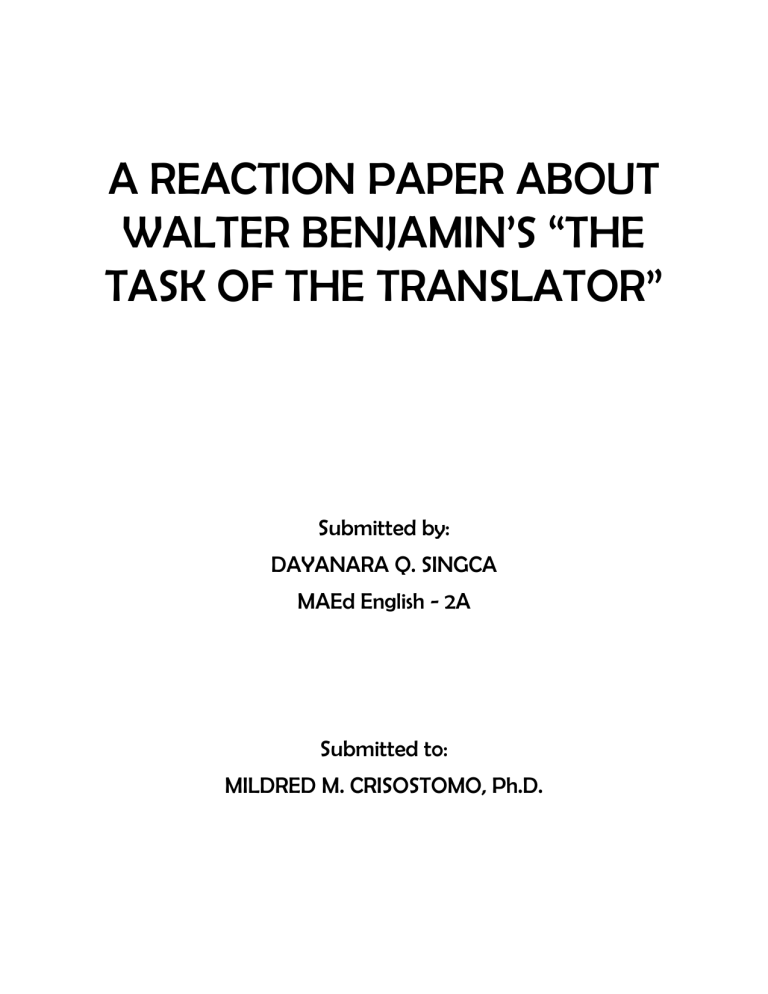
A REACTION PAPER ABOUT WALTER BENJAMIN’S “THE TASK OF THE TRANSLATOR” Submitted by: DAYANARA Q. SINGCA MAEd English - 2A Submitted to: MILDRED M. CRISOSTOMO, Ph.D. If we are to define the word “translator” according to Merriam-Webster Dictionary, it is someone who transfer or turn one set of symbols into another and express it in different terms and words. It may sound as simple as the definition given, but there is definitely more to it. Walter Benjamin in his book “The Task of a Translator”, enlightens us on what actually translation is and how to do it properly without sacrificing the meaning. Translation is a mode. To comprehend it as mode one must go back to the original, for that contains the law governing the translation: its translatability. For a translator to do his task accurately, he must always refer to the original for it is the basis to create another form that is an echo of the former. Benjamin also reiterated and made it clear in the book that the task of a translator is not to express the meaning that the author wants to convey because he has already done that in the original text. It can also cause chaos because the translator might give a different meaning which is far different from what the author actually meant. The task of the translator rather is to produce a pure language by means of inventing a new original using another language. There is also this idea of kinship of language and for this to be established, the translator must be able to convey the meaning and form precisely. Nevertheless, it would also be impossible to have a perfect translation since translation involves culture where some parts are not translatable. In my view, I thought that translating a text into another language wouldn’t be that hard for as long as the readers will be able to understand the message that the author wanted to convey. But, upon reading “The Task of a Translator” by Benjamin Walter, I was able to understand the true aim of any work of translation. According to Benjamin Walter, art is not primarily about communication: “No poem is intended for the reader, no picture for the beholder, no symphony for the audience” (“The Task” 253). In translation, a translator does not conform to the readers but to the relationship and connection of the two languages instead and how they complement one another to be able to form a linguistic harmony. To conclude, I found Benjamin’s work interesting, though it includes complex notions that are really hard to fathom like the idea of “pure language”. It might be hard for a novice translator to understand the said concept for a clear process and concrete example on how to achieve pure language are needed.



